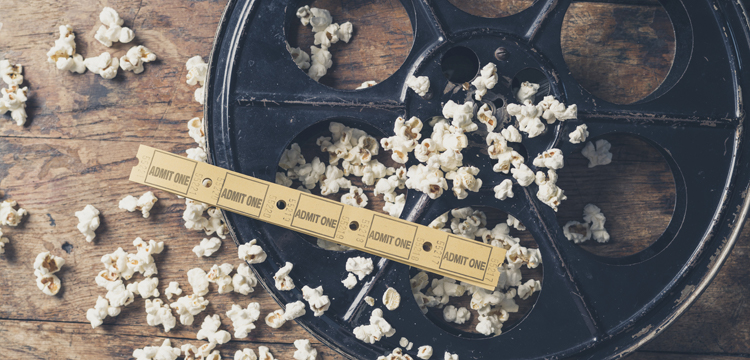For many people, the idea of delivering a presentation to professional colleagues brings up images of standing in front of an audience and summoning up enough courage to speak. Being able to project an air of confidence and hold the room are, of course, key skills for presenters, but there's something equally important that needs to take place behind the scenes.
Just as a Hollywood movie relies on a well-executed script as much as the pull of its stars, great presentations are well-structured and planned to the minute as well as being clearly delivered. It's not surprising, therefore, that we can learn some useful tips about structuring presentations by thinking about how filmmakers storyboard their movies.
What's the point of a storyboard?
When Hollywood filmmakers storyboard a movie, they produce a visual representation of each individual 'scene'. This helps them test out their ideas and evaluate how best to reveal the story to the viewer. The storyboarding process allows the writer and director to move scenes around, delete them, or add new ones before they start filming anything. In the same way, developing a storyboard for a presentation can help you test out the structure of your talk before you start designing slides or getting bogged down in a detailed script.
How do I make and use a storyboard?
The easiest way to make a storyboard is to represent each stage, or 'scene', in your presentation on a Post-it. This could be a visual representation or a few words summarizing the key point of that part of your talk. Lay these Post-its out on a sheet of paper, or stick them to a wall, step back, and evaluate them. Look at the overall narrative you've outlined, how the content is spread across the available time, and how individual scenes link together.
Using some movie directors' rules of thumb can help:
-
Tell a story
Is there a clear narrative comprising a beginning, middle, and end? If there isn't a stage that sets the scene at the start, or one that presents a clear conclusion at the end, add these in. Without a hook at the start and a resolution at the end, your audience may lose interest, and your presentation could fizzle out.
-
Every scene must serve a purpose
Does each Post-it serve a purpose in your presentation? If a scene isn't supporting the story you want to tell, cut it, no matter how cool or fun you think it is. Keep your presentation focused exclusively on your story to maintain audience engagement.
-
Maintain continuity across scenes
Are you using the same images or words to represent concepts throughout the presentation? If you describe or depict the same thing differently in various scenes, update your scenes for consistency. This avoids confusing your audience.
-
Only use jump cuts for dramatic effect
Are you jumping between parts of your story or argument too quickly for your audience to follow? If so, incorporate additional scenes to guide your audience through your thinking. Filling in gaps for themselves may overwhelm or lose their interest.
What do I do once my storyboard is finished?
In the film industry, the storyboard serves as a template for the filming process. Similarly, you should use your storyboard as a template for your presentation. It can form the basis of your slides and serve as the structure you follow while speaking. It may also inspire ideas for integrating images or multimedia to enhance your talk.
Storyboarding is particularly useful when developing a presentation with colleagues. It helps the team focus on the presentation structure and allows the assignment of separate components to different individuals, ensuring a coherent result.
You can learn more about structuring your thoughts, designing slides, and delivering impactful presentations in Anna's new course: Presentation Skills.
Explore our wide range of verifiable CPD on professional skills here!
